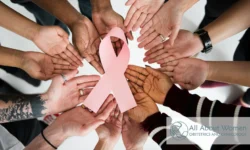
Cholesterol levels should be something all women pay attention to, whether 25 or 75 or somewhere in between. According to the CDC, approximately 1 in 3 adults have high cholesterol, but many people don’t realize it.
The only way to know whether or not you have high cholesterol is to have your blood tested regularly. This is just 1 reason why keeping up with yearly physicals and well-woman care is important.
What is cholesterol and why is it bad?
Cholesterol is found in every cell in your body and it comes from 2 different sources: food and your body itself. This fatty, waxy substance is necessary for certain body functions like producing hormones and liver bile.
There are 2 different types of cholesterol: LDL and HDL.
LDL (low-density lipoprotein) cholesterol is known as “bad cholesterol” because it can stick to the walls of your arteries, causing blockages and heart disease. HDL (high-density lipoprotein) is known as “good cholesterol” because it works to remove excess LDL from your body.
What is considered high cholesterol?
So what is the “normal range” for cholesterol and when should you be concerned?
Good LDL cholesterol levels are anything below 100. Anything about 160 is considered high. The middle range between 100 and 160 is considered “moderately elevated” and can usually be lowered with diet and exercise.
Don’t make the mistake of thinking you’ll only deal with high cholesterol when you’re “old.” Build-up of LDL cholesterol in women can start when you’re in your 20s. Because of this, the American Heart Association (AHA) recommends getting your cholesterol checked every 4-6 years beginning at age 20.
How can I lower my cholesterol?
Depending on family history and other risk factors, your doctor will help you determine the best treatment plan for lowering your cholesterol. Often, they’ll suggest a diet change and adding more exercise to see if that’s enough to bring your LDL levels to a healthy range.
Here are some suggestions for eating a heart-healthy diet:
- Lots of fiber. Eating foods high in fiber (i.e. whole grains and vegetables) helps to reduce the cholesterol in your body.
- Omega-3s. Omega-3s that are found primarily in fish are good to eat regularly in order to raise your HDL cholesterol level.
- Limit alcohol. For women, it’s recommended to keep your alcohol consumption at 1 drink (or less) per day.
- Eat foods that are low in fat. Too much saturated and trans fat can raise your cholesterol levels significantly. Watch out for processed foods and sugary food and drinks too.
If diet and exercise aren’t enough to bring your cholesterol down to normal, there are several different medications that help with high cholesterol.
One group of medications called statins work by lowering your body’s natural production of cholesterol. Another group of medications called bile acid resins works by pushing more cholesterol out of your body through your bile. Either way, these types of medications are generally effective at lowering women’s cholesterol.
If you haven’t gotten your cholesterol levels checked recently or if you’re worried about it, make an appointment with your doctor right away. You don’t want to let your cholesterol become too high and not act—that could be a life and death decision.


